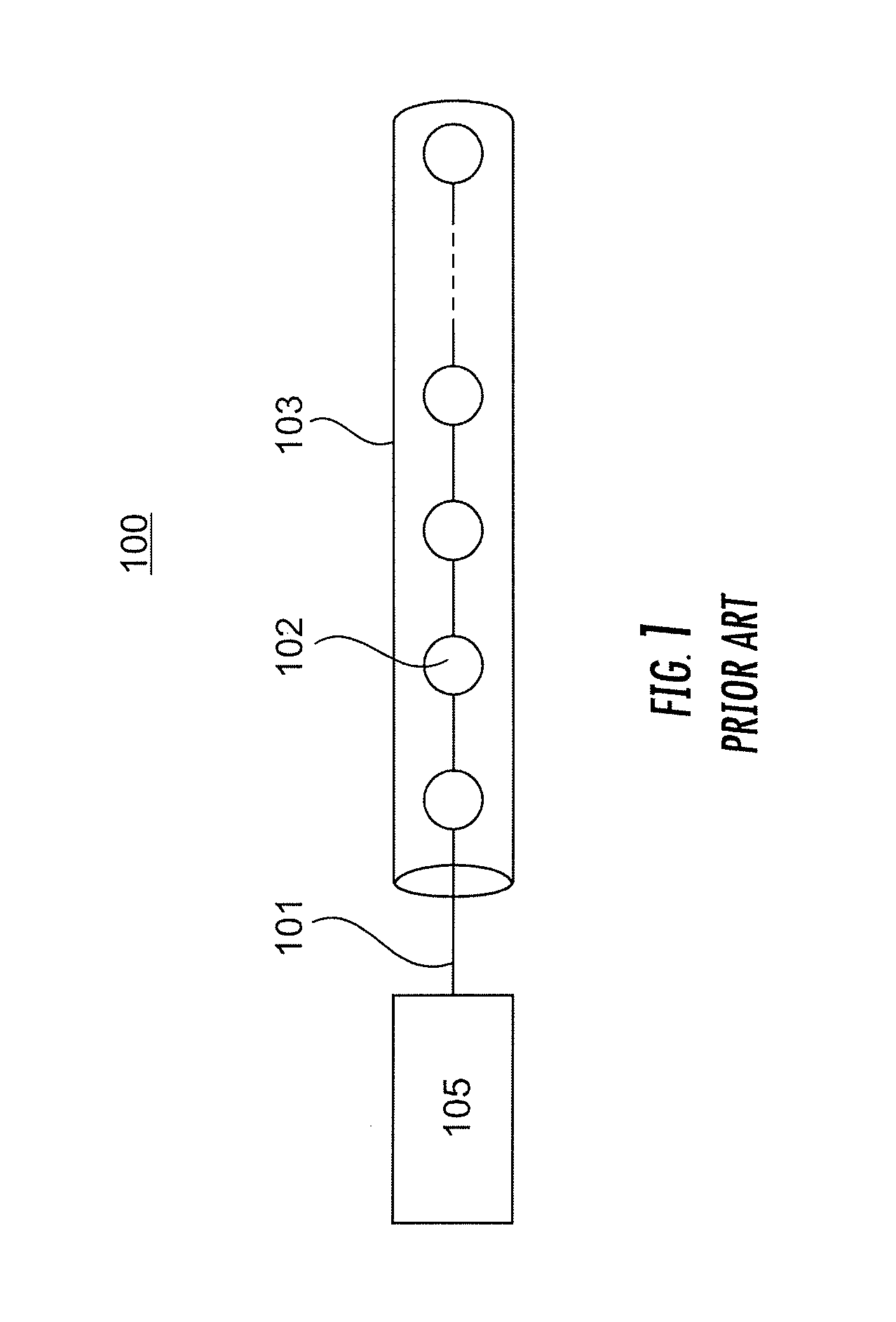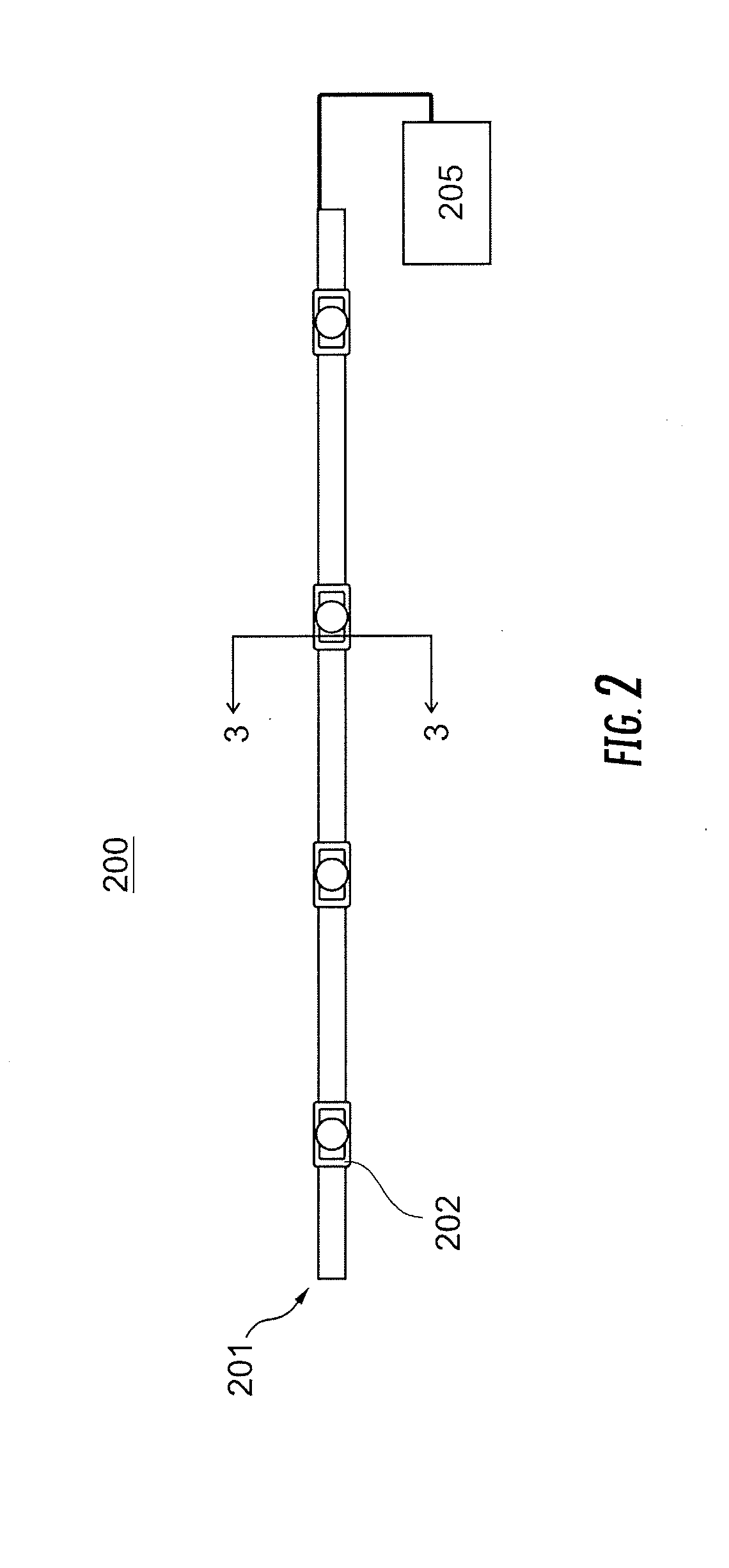Integrally formed light emitting diode light wire and uses thereof
a light wire and integrated technology, applied in the field of integrated light wires and uses thereof, can solve the problems of unsuitable outdoor use of conventional light wires b>100/b> with protective tubes b>103/b>, unsuitable outdoor use of conventional light wires, labor-intensive manufacturing processes, etc., to improve electrical isolation, improve mechanical strength, and improve the effect of ar
- Summary
- Abstract
- Description
- Claims
- Application Information
AI Technical Summary
Benefits of technology
Problems solved by technology
Method used
Image
Examples
first embodiment
[0096 of the Conductive Base
[0097]In a first embodiment of the conductive base assembly 600, shown in FIG. 6A, the base material of the conductive base 601 is preferably a long thin narrow metal strip or foil. In one embodiment, the base material is copper. A hole pattern 602, shown as the shaded region of FIG. 6A, depict areas where material from the conductive base 601 has been removed. In one embodiment, the material has been removed by a punching machine. The remaining material of the conductive base 601 forms the circuit of the present invention. Alternatively, the circuit may be printed on the conductive base 601 and then an etching process is used to remove the areas 602. The pilot holes 605 on the conductive base 600 act as a guide for manufacture and assembly.
[0098]The LEDs 202 are mounted either by surface mounting or LED chip bonding and soldered, welded, riveted or otherwise electrically connected to the conductive base 601 as shown in FIG. 6A. The mounting and soldering...
second embodiment
[0099 of the Conductive Base
[0100]To create series and / or parallel circuitries, additional material is removed from the conductive base. For example, additional portions of the conductive base are removed between the terminals of the LEDs 202 after the LEDs 202 are mounted on the conductive base; thereby, creating at least two conductors wherein each conductor is electrically separate, but then coupled to each other via the LEDs 202. As shown in FIG. 7A, the conductive base 701 has an alternative hole pattern 702 relative to the hole pattern 602 depicted in FIG. 6A. With the alternative hole pattern 702, the LEDs 202 (such as the three shown in FIGS. 7A and 7B) are connected in series on the conductive base 701. The series connection is shown in FIG. 7B, which is a schematic diagram of the conductive base assembly 700 shown in FIG. 7A. As shown, the mounting portions of LEDs 202 provide support for the conductive base 701.
third embodiment
[0101 of the Conductive Base
[0102]In a third embodiment of the conductive base, as shown in FIG. 8A, a conductive base assembly 800 is depicted having a pattern 802 that is punched out or etched into the conductive base 801. Pattern 802 reduces the number of punched-out gaps required and increase the spacing between such gaps. Pilot holes 805 act as a guide for the manufacturing and assembly process. As shown inFIG. 8B, the LEDs 202 are short-circuited without the removal of additional material. In one embodiment, the material from conductive base 801 is removed after the LEDs 202 are mounted.
PUM
 Login to View More
Login to View More Abstract
Description
Claims
Application Information
 Login to View More
Login to View More - R&D
- Intellectual Property
- Life Sciences
- Materials
- Tech Scout
- Unparalleled Data Quality
- Higher Quality Content
- 60% Fewer Hallucinations
Browse by: Latest US Patents, China's latest patents, Technical Efficacy Thesaurus, Application Domain, Technology Topic, Popular Technical Reports.
© 2025 PatSnap. All rights reserved.Legal|Privacy policy|Modern Slavery Act Transparency Statement|Sitemap|About US| Contact US: help@patsnap.com



